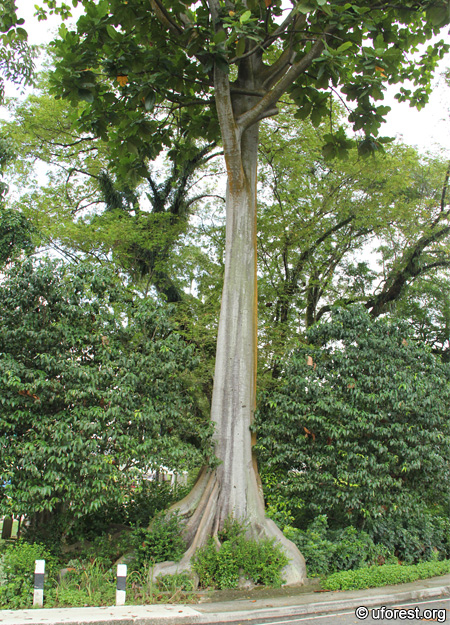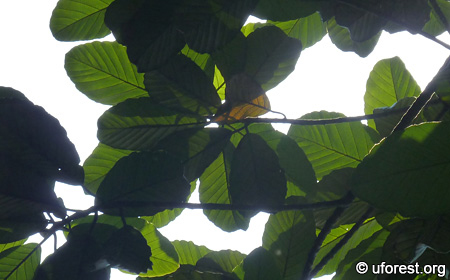| Etymology | Genus | From Greek, (artos) bread and (carpus) fruit, referring to the iconic Breadfruit Tree |
|---|---|---|
| Species | Rubbery; referring to the latex | |
| Family | Moraceae | |
| Synonyms | Artocarpus blumei Trécul, Artocarpus kunstleri King | |
| Common Names | Terap | |
| Status | Native: Least Concern | |
| Form | Tree | |
| Native Distribution | Myanmar, Thailand, Indonesia, Malaysia, Philippines | |
Diagnostics:
Artocarpus elasticus is a common forest tree to 45m, with buttress roots. It can be distinguished from other congeners by its large simple leaves to 50cm long, which are stiff, hairy, and strongly ribbed on the underside (Corner, 1997). Young leaves can be very highly lobbed.
Interesting Facts:
According to Corner (1997), The bark of the Terap is tough and strips easily in large sheets. This is used by forest natives and Malays for lining baskets and bins, making house-walls and as strings. The latex of the species is very sticky, and is used for bird trapping.
Trunk with buttress roots. A heritage tree near National Museum.

Fallen simple leaf.

Mature leaves are simple, without lobes.

Some variation of leaves with lobes.

Young leaves from saplings are highly lobed.

Female flower.
References
Corner EJH. (1997) Wayside Trees of Malaya. Volume 2. 4th edition. The Malaysian Nature Society, Kuala Lumpur. 297 pp.Author: Siyang
Posted: 2017-12-31 / Modified: 2025-09-13